NCHS: A Blog of the National Center for Health Statistics
QuickStats: Percentage of Office-Based Physicians Using Telemedicine Technology, by Specialty — United States, 2019 and 2021
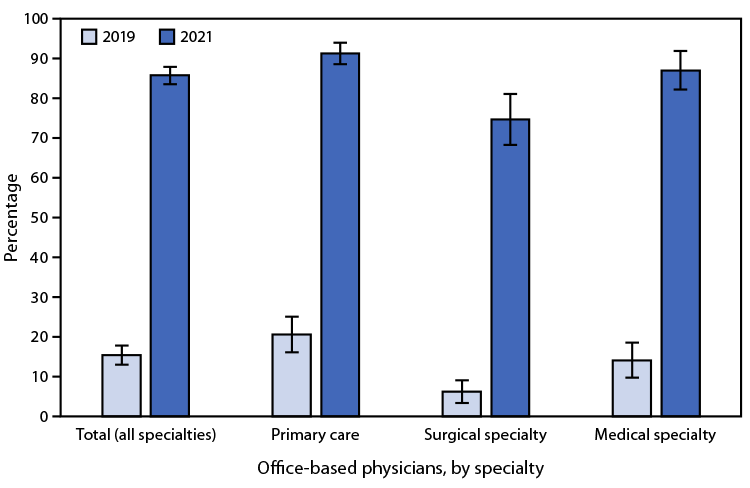
From 2019 to 2021, the use of telemedicine technology increased for office-based physicians from 15.4% to 85.9%. In both 2019 and 2021, the use of telemedicine technology was higher among primary care physicians and medical specialty physicians than it was among surgical specialty physicians. In 2021, 91.4% of primary care physicians, 87.2% of medical specialty Read More >
Posted on byTwin Births Declined 7% During First Year of the Pandemic
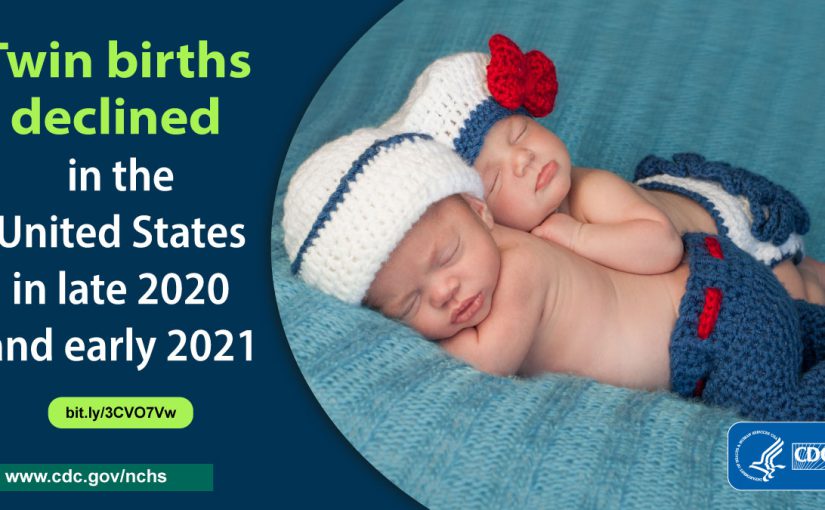
Following an average annual decline of 2% from 2014 to 2019, the number of twin births fell by 7% from 2019 to 2020 and increased by 2% from 2020 to 2021. The data is featured in a new report released today by CDC’s National Center for Health Statistics (NCHS). The report “Changes in Twin Births Read More >
Posted on byQuickStats: Percentage of Adults Aged ≥18 Years Living in Families That Were Food-Insecure in the Past 30 Days by Family Income and Urbanicity — National Health Interview Survey, United States, 2021
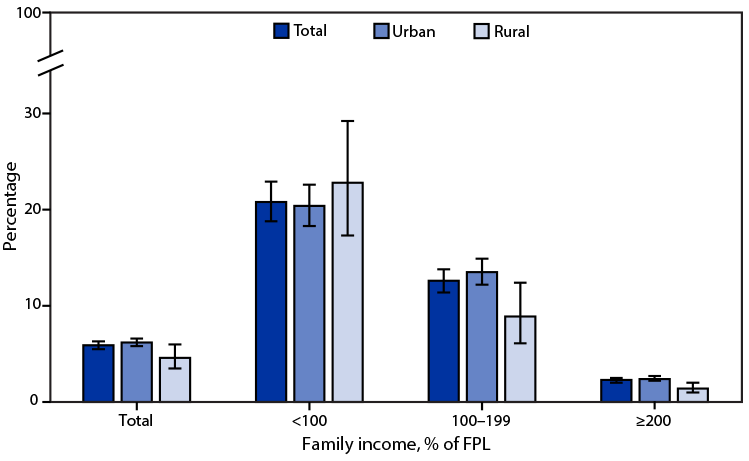
In 2021, 5.9% of adults aged ≥18 years lived in families that were food-insecure in the past 30 days. The percentage was higher in urban areas (6.2%) compared with rural areas (4.6%) overall and within households earning 100%–199% of FPL (13.5% versus 8.9%) and ≥200% of FPL (2.4% versus 1.4%). For adults living in families Read More >
Posted on byPODCAST – HEALTHY PEOPLE 2020: PROGRESS TOWARDS ELIMINATING RACIAL & ETHNIC HEALTH DISPARITIES
https://www.cdc.gov/nchs/pressroom/podcasts/2022/20221130/20221130.htm HOST: The Healthy People initiative was launched by the U.S. Department of Health and Human Services over 40 years ago. Healthy People provides science-based, 10-year targets for public health objectives for the U.S. population. As in the preceding two decades, Healthy People 2020, or HP2020, included an overarching goal related to health disparities. On Read More >
Posted on byDrug & Alcohol Deaths on the Rise Among Older Americans
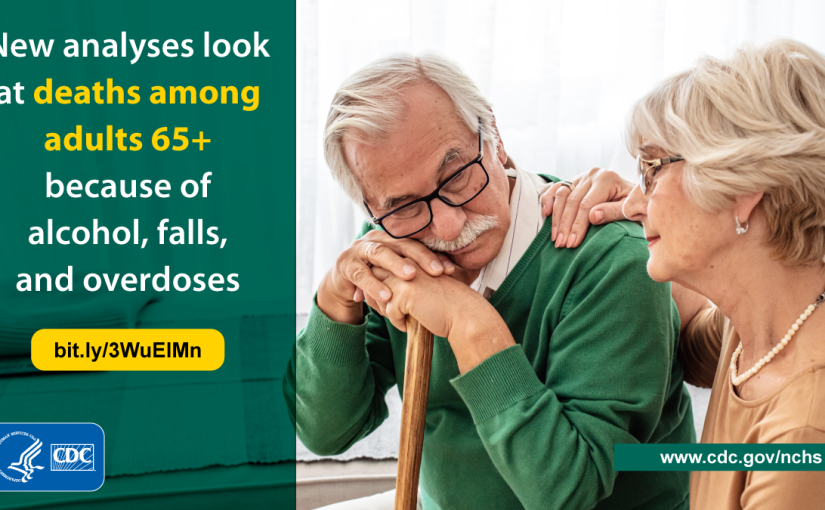
Drug and alcohol abuse have impacted seniors in the United States as it has among younger Americans. Over 5,000 people ages 65 and over in the U.S. died of a drug overdose in 2020, and more than twice that many (11,616) died of alcohol-induced causes. The data are featured in two new reports released today Read More >
Posted on byQ & A from Author of Awareness of the MyPlate Plan: United States, 2017–March 2020
Questions for Edwina Wambogo, Health Statistician and Lead Author of “Awareness of the MyPlate Plan: United States, 2017–March 2020.” Q: Can you describe what the MyPlate plan is? EW: The United States Department of Agriculture developed MyPlate in 2011 as the primary education tool to communicate recommendations from the Dietary Guidelines for Americans. MyPlate is Read More >
Posted on byQuickStats: Drug Overdose Death Rates Among Persons Aged ≥15 Years, by Age Group and Urban-Rural Status — National Vital Statistics System, United States, 2020
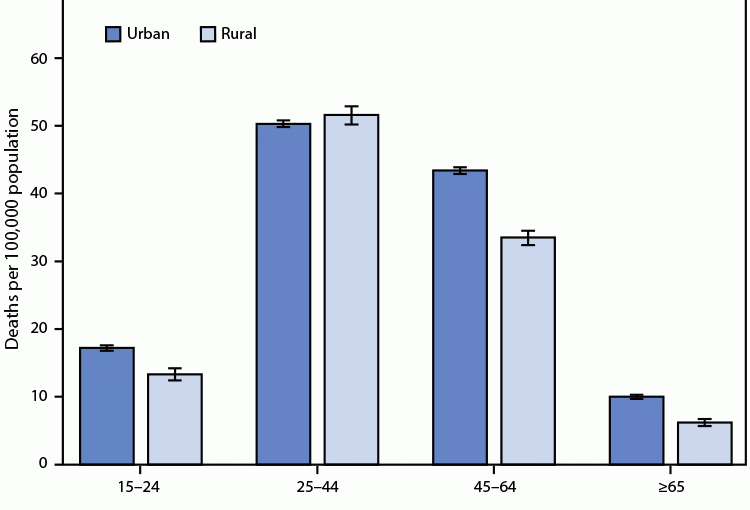
During 2020, death rates for drug overdose causes were higher in urban areas than in rural areas for those aged 15–24 years (17.2 compared with 13.3), 45–64 years (43.4 compared with 33.5), and ≥65 years (10.0 compared with 6.2). Among adults aged 25–44, drug overdose death rates were not significantly different between urban and rural Read More >
Posted on byQuickStats: Death Rates for Drug Overdose Among Persons Aged 25–44 Years, by Race and Ethnicity— United States, 2000–2020
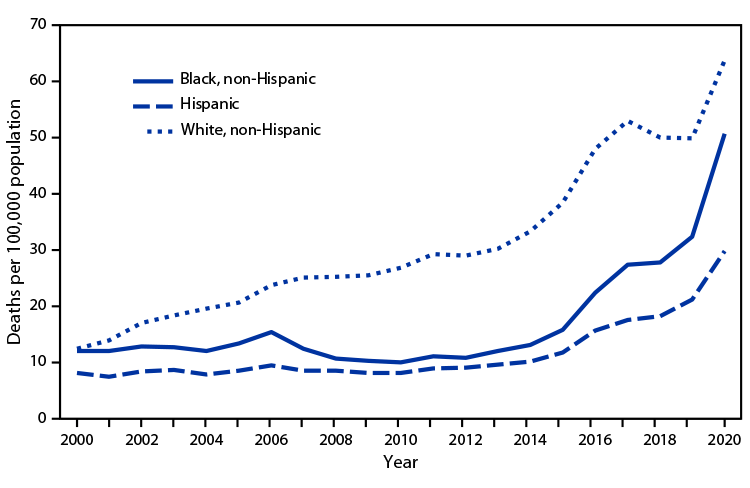
From 2000 to 2013, the rate for drug overdose death increased for non-Hispanic White (White) persons aged 25–44 years but was stable for non-Hispanic Black (Black) and Hispanic persons in this age group. From 2013 to 2020, rates increased for all groups, from 30.2 to 63.8 per 100,000 population for White persons, from 12.0 to Read More >
Posted on byHome Births in the U.S. Increase to Highest Level in 30 Years
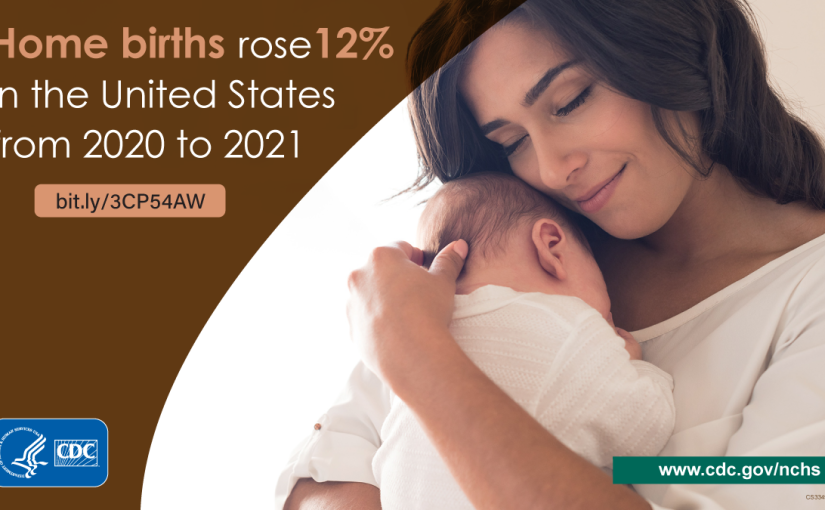
Home births in the United States rose 12% from 2020 to 2021, and reached the highest level since at least 1990. These findings are included in a new report to be released by CDC’s National Center for Health Statistics (NCHS). The report “Changes in Home Births by Race and Hispanic Origin and State of Residence Read More >
Posted on byNCHS Releases Two New Suicide Reports
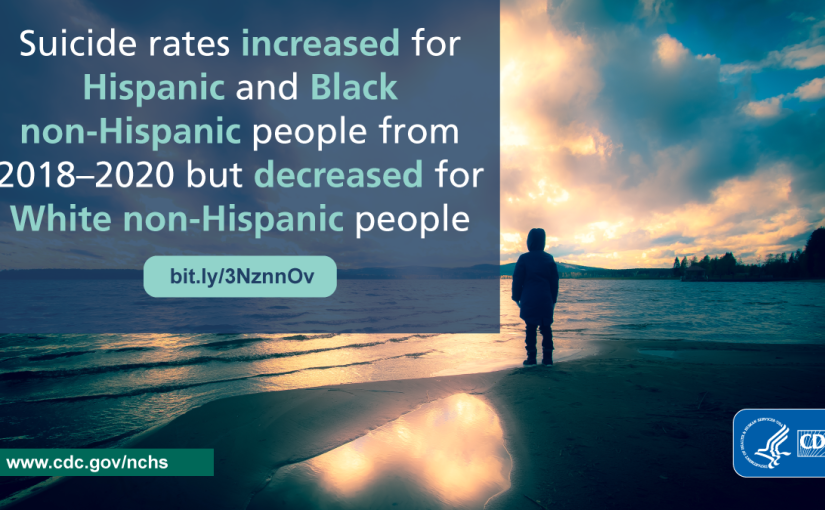
NCHS releases two new reports that look at suicide death rates in the United States. Suicide Rates for the Three Leading Methods by Race and Ethnicity: United States, 2000–2020 Description: This report presents suicide rates from 2000 to 2020 using final data for non-Hispanic White, non-Hispanic Black, and Hispanic people, for the total population and Read More >
Posted on byQuickStats: Percentage of Adults Aged ≥45 Years Who Have Ever Had Lung Cancer by Education Level — National Health Interview Survey, United States, 2021
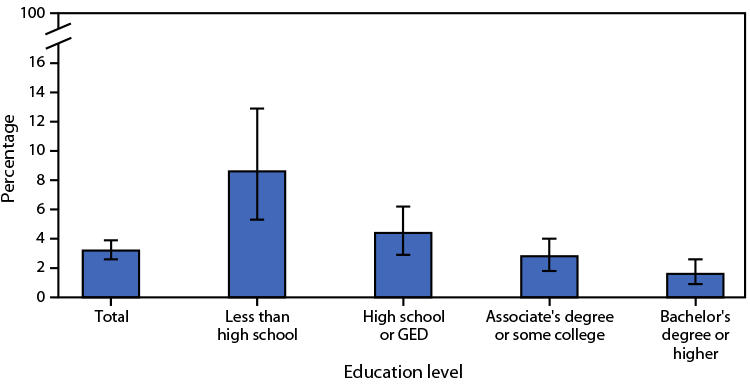
In 2021, 3.2% of adults aged ≥45 years had ever been told they had lung cancer. The prevalence of lung cancer among adults aged ≥45 years was highest for those with less than a high school education (8.6%). The percentage of adults who had ever had lung cancer decreased with increasing education level, with the Read More >
Posted on byQuickStats: Age-Adjusted Rates of Alcohol-Induced Deaths by Urban-Rural Status — United States, 2000–2020
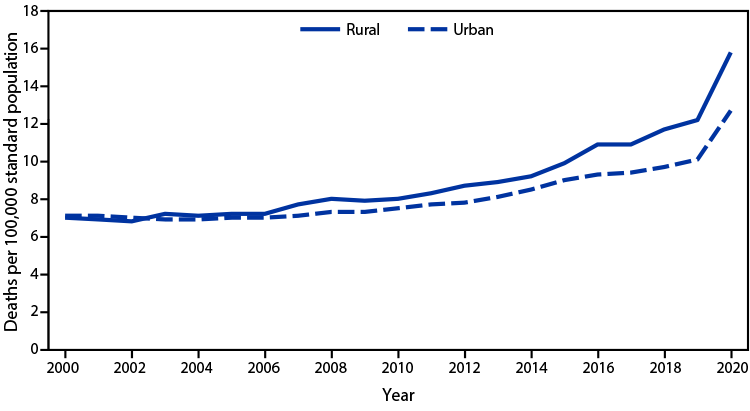
The age-adjusted rate of alcohol-induced deaths in 2020 was 13.1 per 100,000 standard population. From 2000 to 2020, the rate increased in both urban and rural counties: from 7.1 to 12.7 in urban counties and from 7.0 to 15.8 in rural counties. From 2019 to 2020, the rate increased by 26% for urban counties and 30% for rural counties, which Read More >
Posted on byNew Studies: Geographic and Demographic Variation in Health Insurance Coverage
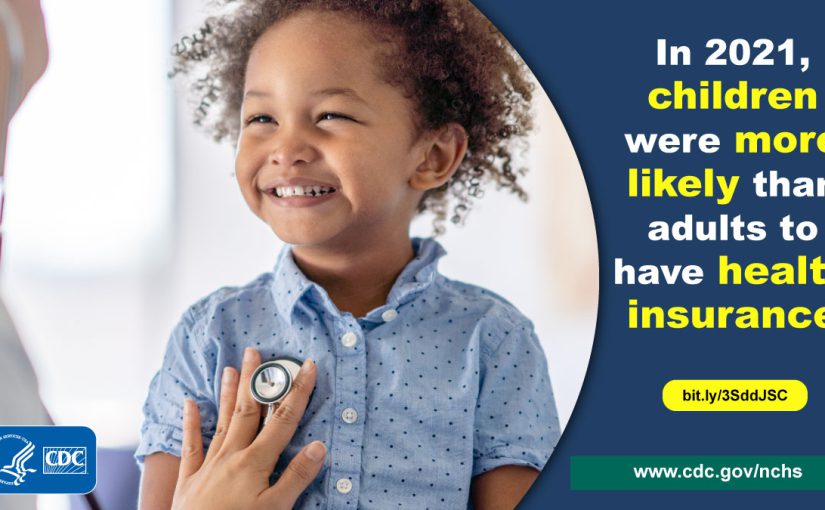
Nearly 25 million working age adults in the United States (ages 18-64) were without health insurance in 2021, according to new data from CDC’s National Center for Health Statistics. Texas, Georgia, and North Carolina had the highest rates of uninsured among this group. The data are captured in two new reports using data from the Read More >
Posted on byPODCAST: COVID-19 Mortality by Occupation and Industry
We talked this week with Ari Minino, a statistician with the NCHS Division of Vital Statistics and co-author on a new report out on October 28th on COVID-19 mortality in 2020 by occupation and industry. The report was a collaborative analysis conducted by NCHS and NIOSH - the National Institute for Occupational Safety and Health. Read More >
Posted on byQuickStats: Age-Adjusted Death Rates for Stroke Among Adults Aged ≥ 65 Years, by Region and Metropolitan Status — National Vital Statistics System, United States, 2020
In 2020, the age-adjusted death rate for stroke among adults aged ≥65 years was 260.5 deaths per 100,000 population with rates lower in metropolitan compared with nonmetropolitan areas (259.4 versus 265.5). The rate was highest among those living in the South (288.2) and lowest among those living in the Northeast (199.1). In the Northeast, the Read More >
Posted on byQuickStats: Emergency Department Visit Rates by Age Group — United States, 2019–2020
The emergency department (ED) visit rate for infants aged <1 year declined by nearly one half from 123 visits per 100 infants during 2019 to 68 during 2020. The ED visit rate for children and adolescents aged 1–17 years also decreased from 43 to 29 visits per 100 persons during the same period. Decreases among Read More >
Posted on byQuickStats: Age-Adjusted Death Rates from Stroke Among Adults Aged ≥65 Years, by Race and Hispanic Origin — National Vital Statistics System, United States, 2000–2020
Age-adjusted death rates from stroke among adults aged ≥65 years generally declined from 425.9 deaths per 100,000 standard population in 2000 to 250.0 in 2019 before increasing to 260.5 in 2020. During 2019–2020, stroke death rates increased for Hispanic adults (from 221.6 to 234.0), non-Hispanic Asian or Pacific Islander adults (from 203.9 to 216.4), non-Hispanic Read More >
Posted on byQuickStats: Percentage of Residential Care Communities that Offer Annual Influenza Vaccination to Residents and to Employees and Contract Staff Members, by Community Bed Size — United States, 2020
In 2020, 87.2% of residential care communities offered annual influenza vaccination to residents, and 77.8% offered annual influenza vaccination to all employees and contract staff members. The percentage of residential care communities offering annual influenza vaccination to residents and to all employees and contract staff members increased with increasing community bed size. The percentage of Read More >
Posted on byUpdated COVID-19 Data Featured in Latest Release from Household Pulse Survey

As part of its ongoing partnership with the Census Bureau, NCHS recently added questions to assess the prevalence of post-COVID-19 conditions, sometimes called “long COVID,” on the experimental Household Pulse Survey. Today, NCHS released the latest round of Pulse data, collected from September 14-26, 2022. This latest release includes new data on how Long COVID Read More >
Posted on byPODCAST: The Toll of COVID-19 on Physician Practices
The COVID-19 pandemic took a major toll on the U.S. health care system. In a new report released on September 28, data from the National Ambulatory Medical Care Survey were used to examine how COVID-19 impacted physician practices around the country. Joining us to discuss that new study is Zach Peters, a health statistician with the NCHS Division of Health Care Statistics. Read More >
Posted on byQuickStats: Percentage of Residential Care Communities that Use Electronic Health Records, by Community Bed Size — United States, 2016 and 2020
From 2016 to 2020, the percentage of residential care communities using electronic health records increased from 26% to 41%. The percentage using electronic health records increased from 28% to 41% for 11–25 bed communities, 35% to 54% for 26–50 bed communities, 43% to 71% for 51–100 bed communities, and 50% to 74% for more than Read More >
Posted on byQuickStats: Death Rates from Unintentional Falls Among Persons Aged ≥65 Years, by Age Group — National Vital Statistics System, United States, 1999–2020
During 1999–2020, death rates from unintentional falls among persons aged ≥65 years increased among all age groups. The largest increase occurred among persons aged ≥85 years, from 110.2 per 100,000 population in 1999 to 291.5 in 2020. Among persons aged 75–84 years, the rate increased from 31.5 to 67.9, and among those aged 65–74 years, Read More >
Posted on byQuickStats: Percentage of Total Deaths, by Age and Hispanic Origin and Race — United States, 2020
Significant differences in the age distribution of deaths by race and ethnicity were observed in the United States during 2020. Decedents aged <65 years accounted for 26% of all U.S. deaths, but they accounted for approximately 50% of deaths among American Indian or Alaska Native (AI/AN) and Native Hawaiian or other Pacific Islander (NH/OPI) persons, Read More >
Posted on byProvisional Drug Overdose Deaths from 12 months ending in April 2022
New provisional data show that the number of drug overdose deaths occurring in the United States increased by almost 7% from the 12 months ending in April 2021 to the 12 months ending in April 2022, from 101,167 to 108,174. The number of opioid-involved drug overdose deaths in the United States for the 12-month period Read More >
Posted on byQuickStats: Age-Adjusted Suicide Rates, by Urbanization Level and Sex — National Vital Statistics System, 2020
In 2020, age-adjusted suicide rates among females increased as the level of urbanization declined, from 4.6 per 100,000 population in large central metropolitan areas to 7.1 in small metropolitan areas, but were similar for small metropolitan, micropolitan, and noncore areas. Rates among males were lowest in large central areas (16.9) and increased as the level Read More >
Posted on by
